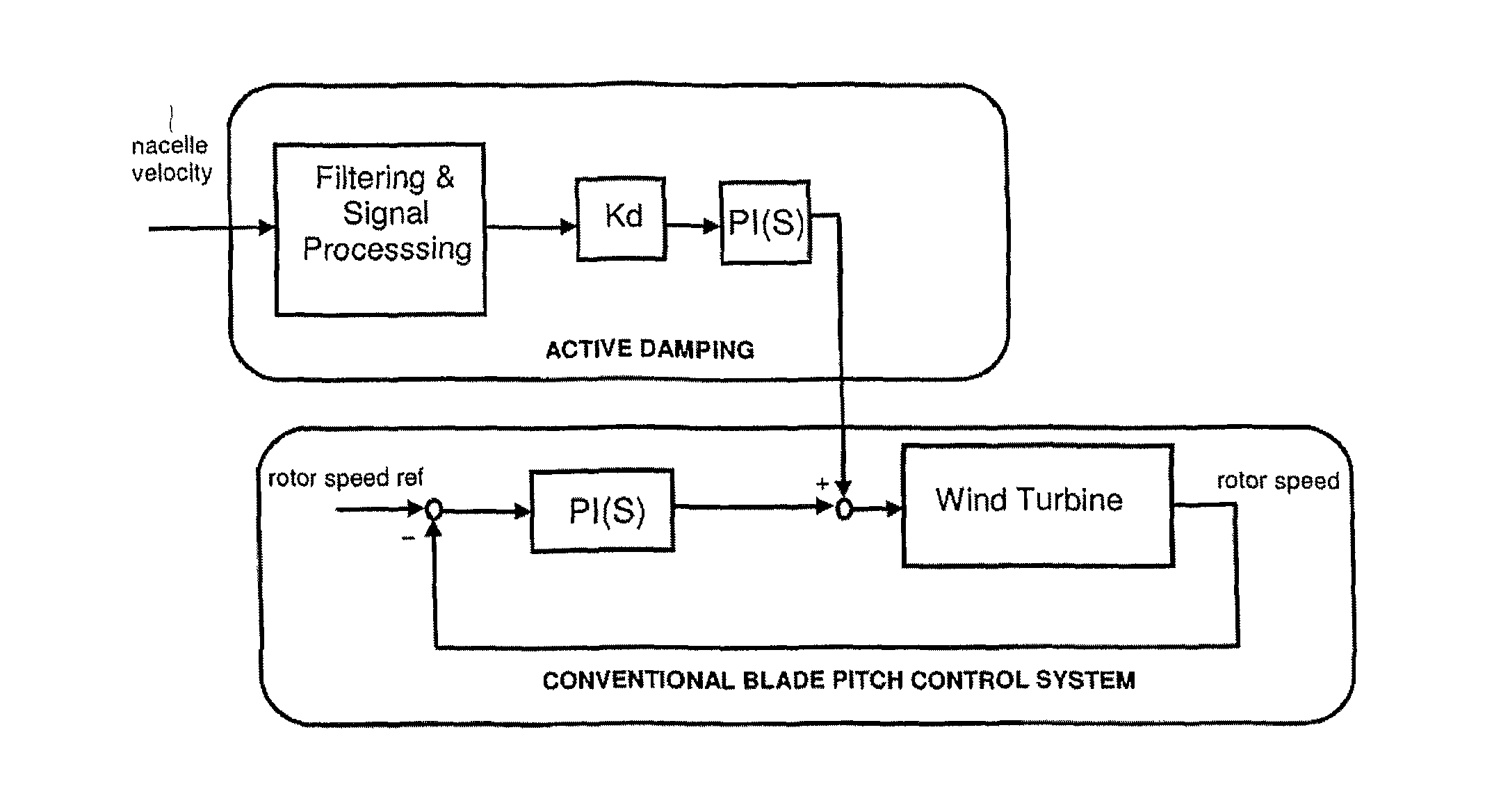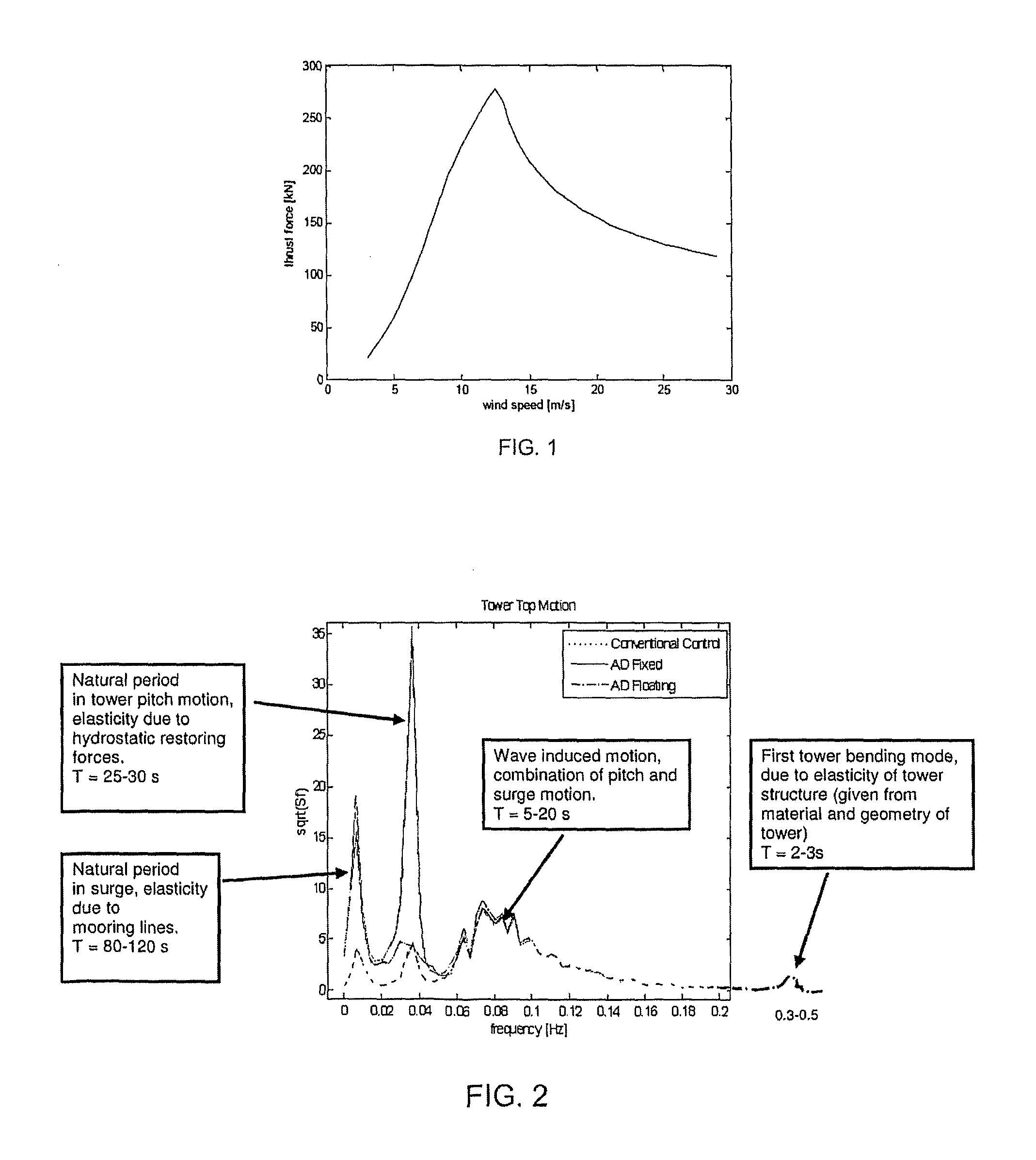Blade pitch control in a wind turbine installation
a technology of wind turbines and blades, applied in the direction of electric generator control, machines/engines, mechanical equipment, etc., can solve the problems of negative damping, reduced thrust force, and reduced overall efficiency or power output of wind turbines, so as to reduce or prevent negative damping of rigid body oscillations and simplify the structure
- Summary
- Abstract
- Description
- Claims
- Application Information
AI Technical Summary
Benefits of technology
Problems solved by technology
Method used
Image
Examples
Embodiment Construction
[0107]FIG. 4 shows a schematic diagram of a blade pitch control system with active damping for a floating wind turbine installation.
[0108]Compared with FIG. 3, which shows a blade pitch control system involving vibration control for actively damping bending vibrations in a fixed-base wind turbine, the blade pitch control system for a floating wind turbine shown in FIG. 4 uses the transfer function hc(s) twice.
[0109]The angular frequency of the rotor ωr in FIG. 4 can be expressed as:
[0110]ωr(s)=h0(s)1+h0(s)ωref+h0(s)1+h0(s)Kdvnacelle=M(s)ωref+M(s)Kdvnacelle(31)
[0111]If the control parameters are tuned according to the first structural bending mode of the tower, the active damping contribution M(s) Kdνnacelle will be will provide active damping of the low frequency rigid body oscillations of the structure because, according to equation (26), the absolute value of M(s) will have an absolute value of around 1 and very little phase lag for frequencies within the bandwidth of...
PUM
 Login to View More
Login to View More Abstract
Description
Claims
Application Information
 Login to View More
Login to View More - R&D
- Intellectual Property
- Life Sciences
- Materials
- Tech Scout
- Unparalleled Data Quality
- Higher Quality Content
- 60% Fewer Hallucinations
Browse by: Latest US Patents, China's latest patents, Technical Efficacy Thesaurus, Application Domain, Technology Topic, Popular Technical Reports.
© 2025 PatSnap. All rights reserved.Legal|Privacy policy|Modern Slavery Act Transparency Statement|Sitemap|About US| Contact US: help@patsnap.com



